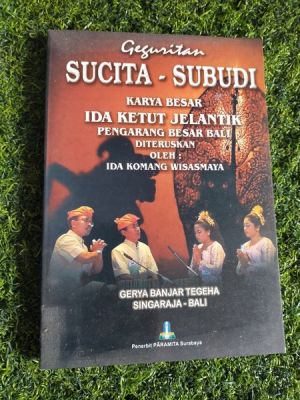Ida Ketut Djelantik
- Full Name
- Ida Ketut Djelantik
- Pen Name
- Photograph by
- Link to Photograph
- Website for biography
- Place
- Geria Tegeha Banjar, Desa Tegeha, Kecamatan Banjar, Singaraja
The place does not exists yet in wiki, click to create it - Related Music
- Related Books
- Related Scholars Articles
Biography
In English
As a child he was raised in the Gria environment where his daily life tends to be busy with social activities, he has a desire to study religion and philosophy as well as moral encouragement for the village environment where he grew up.
His education level was only up to SR or Sekolah Rakyat (People's School) and it was not finished, with his desire to explore tattwa, ethics and philosophy he studied it self-taught until he got recognition from local residents and the Dutch Government at that time.
Because of his high achievements and abilities, in 1938 he was appointed to work in the Religious Staff at the Religious Office of the Lesser Sunda Province at that time in Singaraja.
He was also assigned by the Governor-General of the Netherlands to Bogor to translate Sanskrit books and manuscripts into Indonesian and Kawi of his literary abilities.
In 1950 he worked at the Kodam Raksa Buana which is now known as Kodam 11 Udayana as the Hindu Rohdam, he also participated in compiling the emblem of the Pataka Kodam Udayana.
Then, he passed away in 1961 to be exact on the 18th of NovemberIn Balinese
In Indonesian
Semasa kecil beliau dibesarkan di lingkungan Gria yang kesehariannya cenderung disibukkan dengan kegiatan sosial, beliau memiliki keinginan untuk mendalami ajaran agama dan filsafat serta dorongan moral untuk lingkungan desa tempat beliau dibesarkan
Jenjang pendidikan beliau hanya sampai SR atau Sekolah Rakyat dan itu tidak sampai tamat, dengan keinginan beliau itu mendalami tattwa, etika dan filsafat beliau mempelajari itu secara otodidak sampai mendapatkan pengakuan dari warga setempat dan pemerintahan belanda pada saat itu.
Karena prestasi dan kemampuannya yang tinggi, pada tahun 1938 beliau diangkat bekerja di Staff Agama di Kantor Agama Provinsi Sunda Kecil pada saat itu di Singaraja.
Beliau juga ditugaskan oleh Gubernur Jendral Belanda ke Bogor untuk menerjemahkan buku dan lontar Bahasa Sansekerta ke Bahasa Indonesia dan Bahasa Kawi atas kemampuan sastra yang beliau miliki.
Pada tahun 1950 beliau bekerja di Kodam Raksa Buana yang sekarang dikenal Kodam 11 Udayana sebagai Rohdam Hindu, beliau juga ikut serta dalam menyusun lambang Pataka Kodam Udayana.
Kemudian, beliau meninggal pada tahun 1961 tepatnya pada tanggal 18 bulan NovemberExamples of work
Dharma is one of the important concepts in Hinduism. Dharma is often equated with truth, virtue or duty and law. Dharma is likened to a smooth and very cool path that can protect and help people who follow that path from disaster. One who practices the Dharma is called "Dharmika". People who practice dharma only want one thing that is eternal and eternal happiness not the false happiness caused by worldly things.
Tri Hita Karana is the concept of harmonious relationship that can bring happiness. The harmony of the relationship includes three things, namely the harmony of human relations with God, the harmony of human relations with fellow humans and the harmony of human relations with the surrounding natural environment. In the Geguritan Sucita-Subudi, the concept of harmony between humans and God is called an unreal or spiritual relationship, while the concept of harmony between humans and humans and the relationship between humans and the natural environment.
Rwa Bhineda is a dualistic concept that reflects two opposite categories in life, such as good and bad or positive and negative. In the Geguritan Sucita-Subudhi, this concept is explained implicitly or indirectly in the expression in something called "Byakta" or something that exists always contains two things that unite. This concept implies that in this world nothing is perfect except God. Everything has advantages and disadvantages at the same time.
Karmaphala is one of the five belief systems in Hinduism called Panca Sradha. Karmaphala comes from the words karma 'action' and phala 'fruit' which is defined as the result of one's actions. The essence of the notion of karmaphala is that a cause will produce an effect.
Geguritan Sucita-Subudi consists of 1841 stanzas. Of the many stanzas that are formed by 11 kinds of pupuh. The eleven kinds of pupuh are Sinom, Pangkur, Durma, Ginanda, Ginanti, Kumambang, Warga-sari, Pucung, Semarandhana, and Sadpada Ngisep Sekar. Among these pupuh the most frequently used is the Sinom pupuh, which is 15 times. The use of these pupuhs in the Geguritan Sucita-Subudi is selected and adjusted between the duties or character of each pupuh.







Enable comment auto-refresher